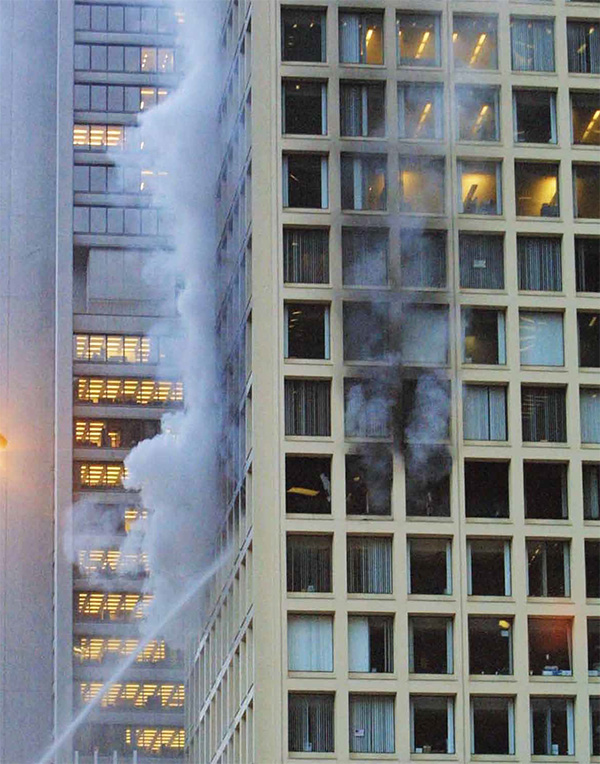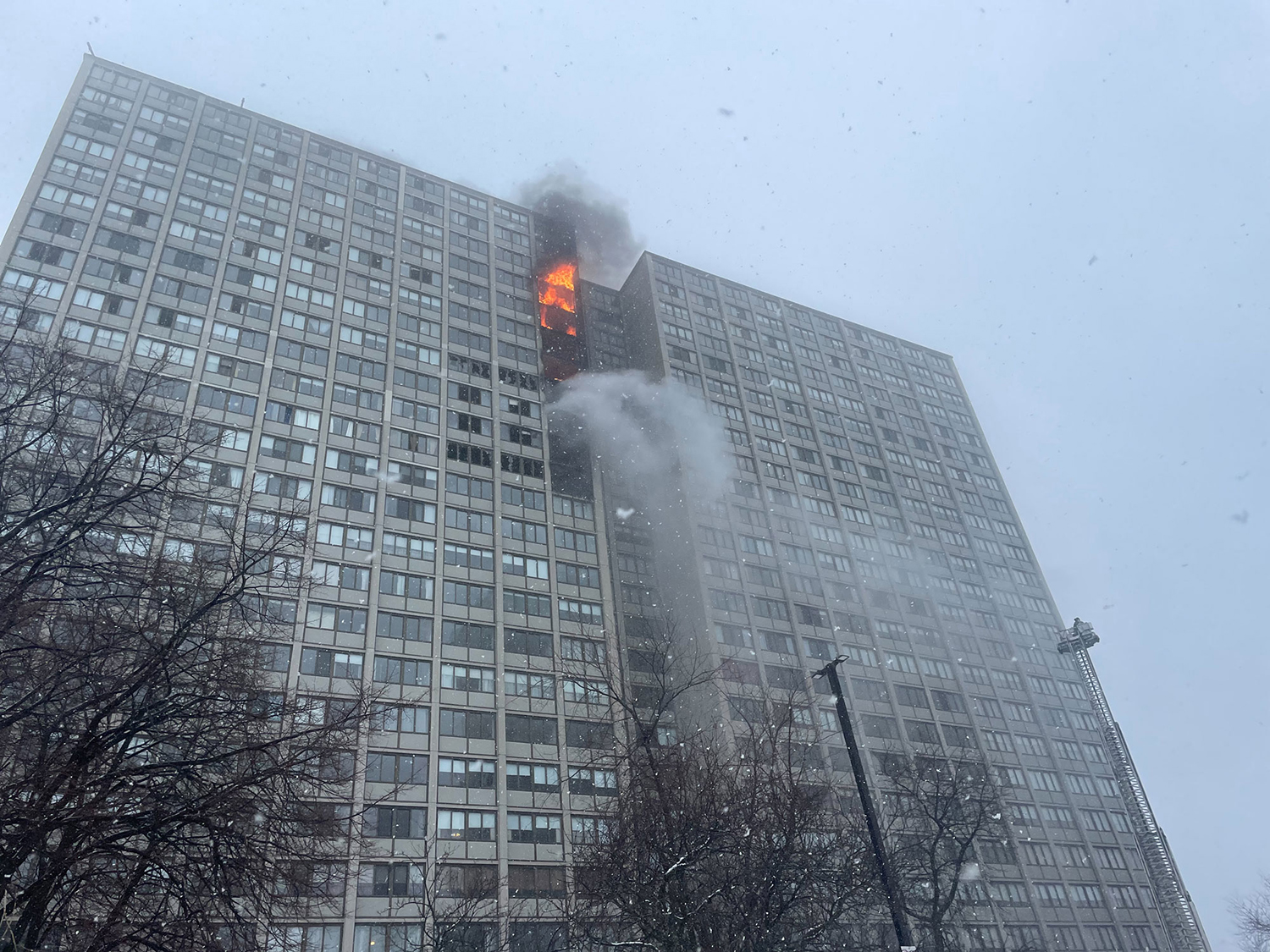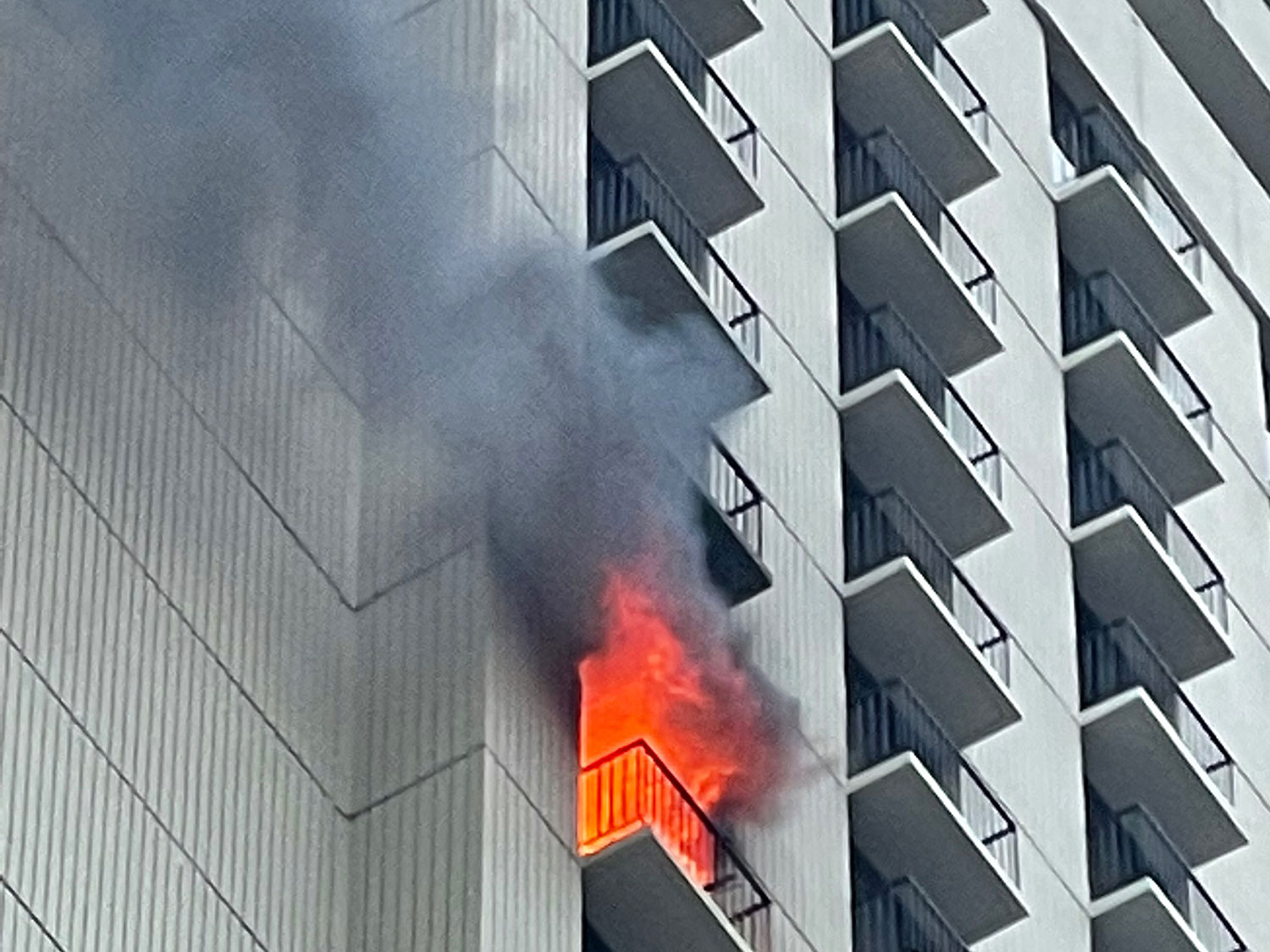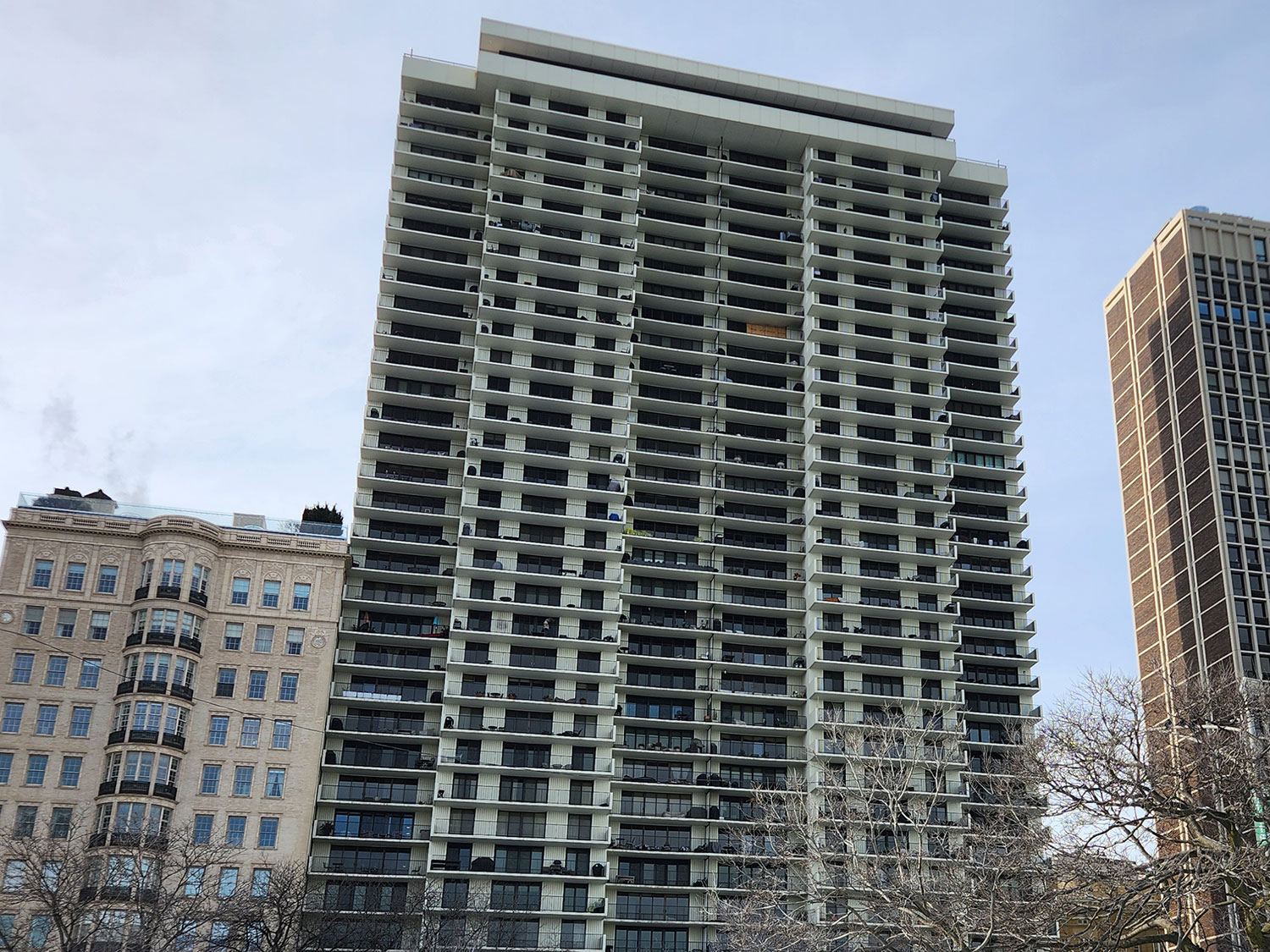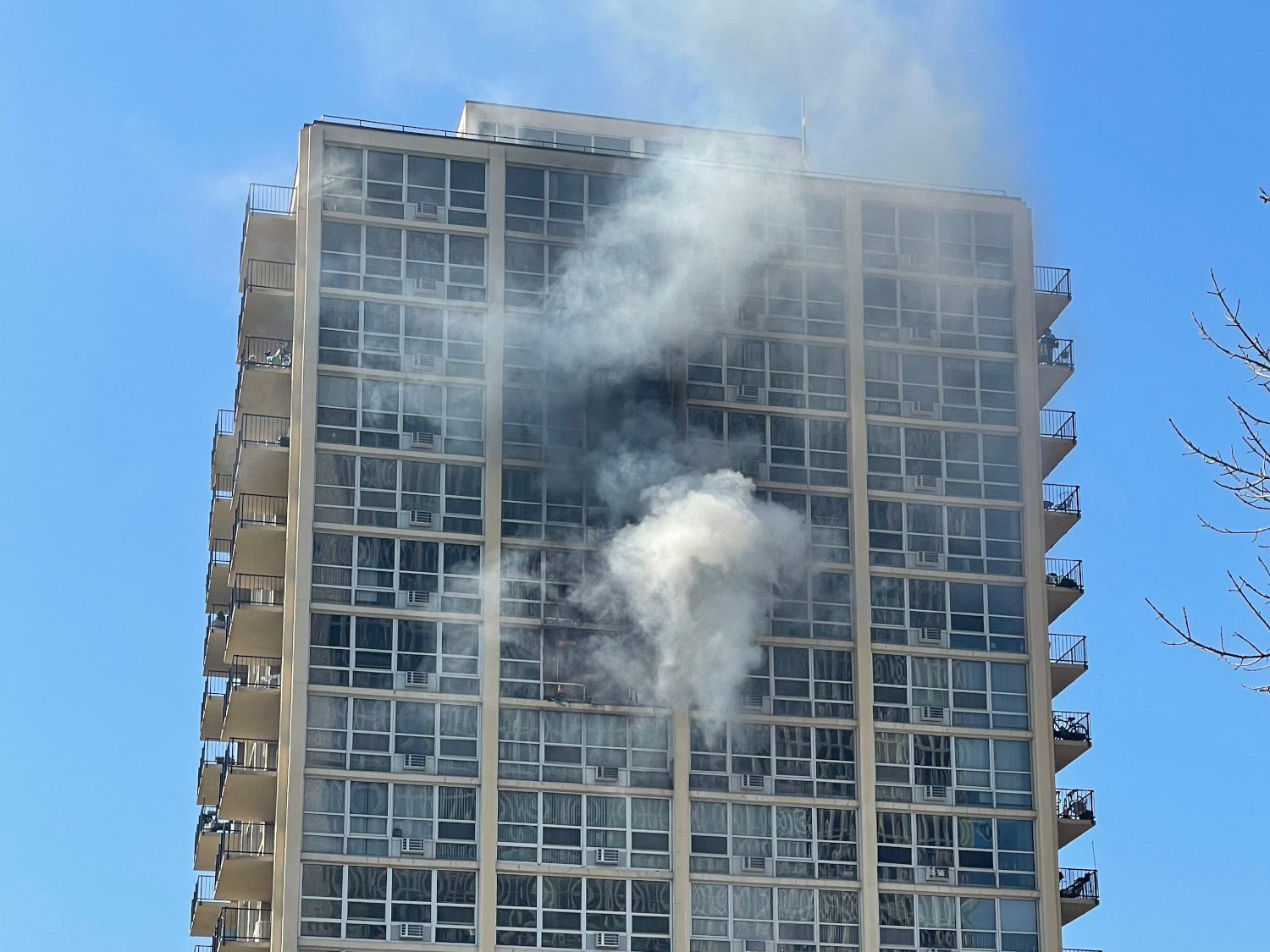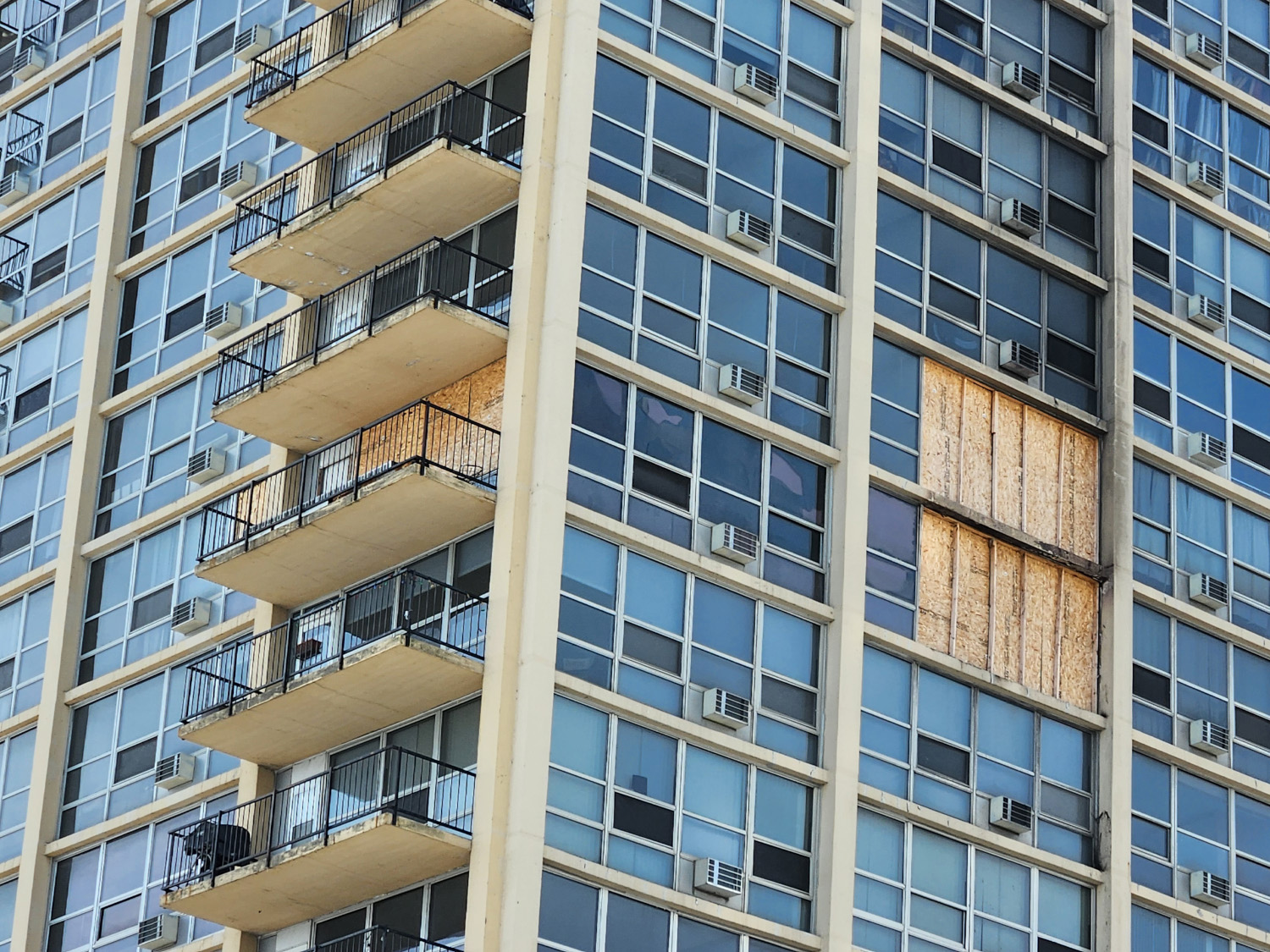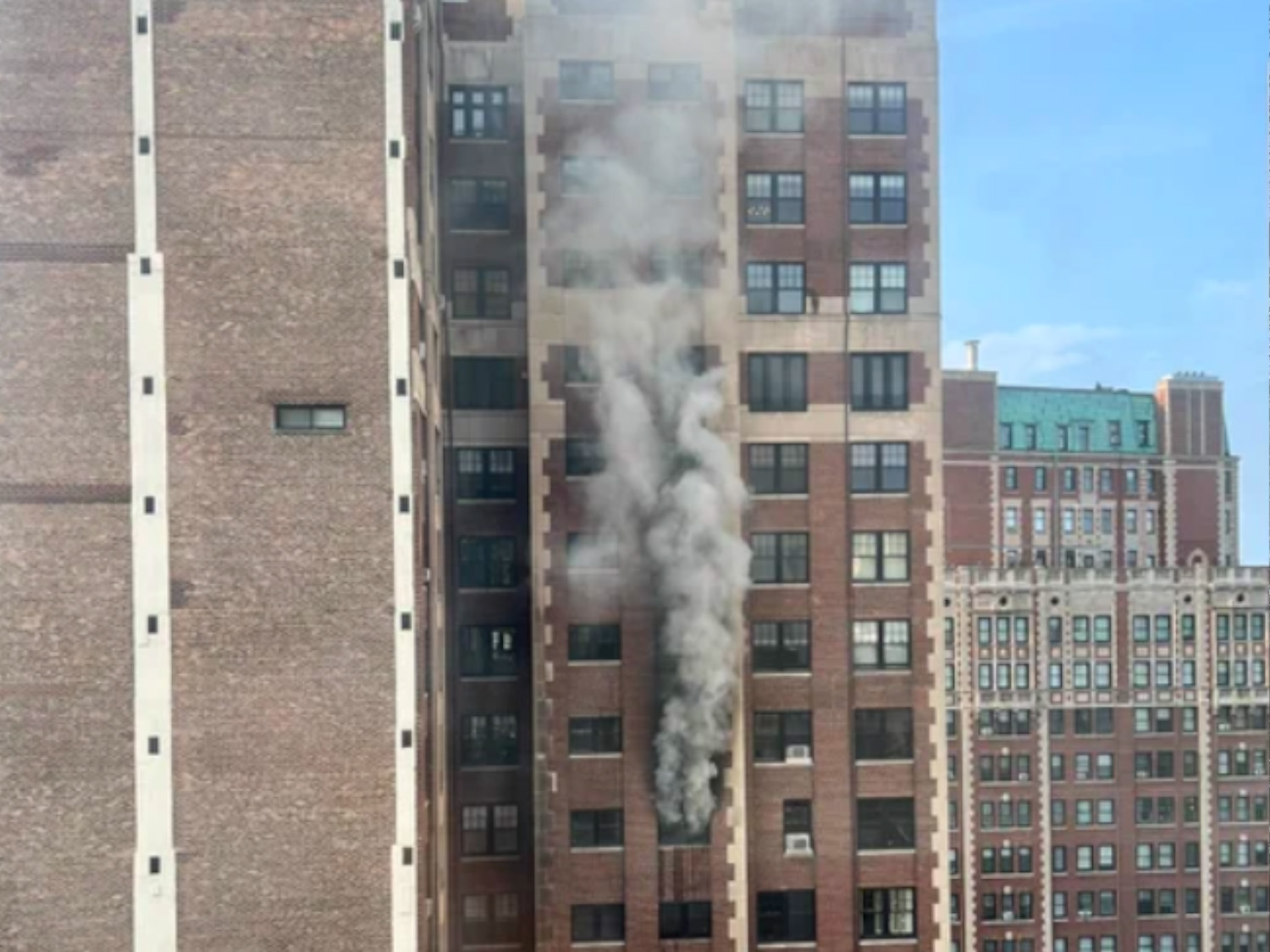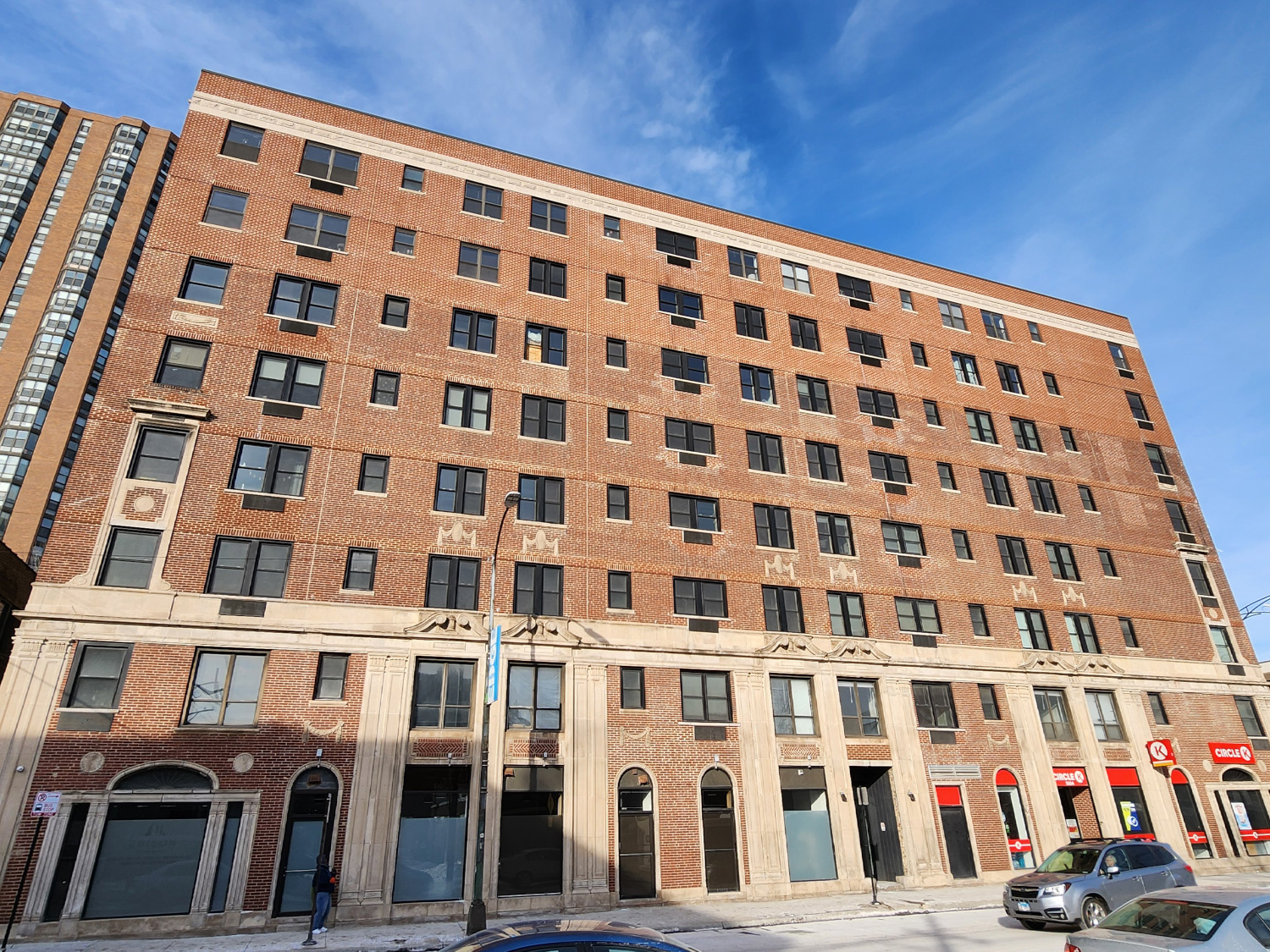May 1987: 31-year-old Nancy Clay died from smoke inhalation in a high-rise office building.
October 1987: Chicago Fire Commissioner Louis Galante calls for mandatory fire sprinklers in all high-rise buildings. New York, Philadelphia and Boston already require fire sprinkler systems in all high-rises.
June 1999: A $400,000.00 City of Chicago study by the TriData Corporation recommended that Chicago should adopt a national code and that fire sprinklers should be retrofit older high-rise buildings in a 5-10 year phase-in plan.
January 2001: The Illinois State Fire Marshal’s Office adopted NFPA 101, Life Safety Code, 2000 Edition requiring existing high-rise buildings in excess of 75 feet in height, to be equipped with fire sprinkler systems or an engineered life safety system. The code was effective January 2, 2002.
January 2002: Fire on 14th floor of 44-story building at 260 East Chestnut kills one and injures 11 including eight firefighters. (See Dec. 2009 for second fire.)
October 17, 2003: Six people died in the Cook County Administration building fire, 69 W. Washington Street.
- The Cook County Administration Building Fire Report (prepared by Judge Mikva) concludes that fire sprinklers could have prevented the six deaths and recommended that the City of Chicago adopt a retrofit ordinance.
- State of Illinois commissioned James Lee Witt Associates to conduct an independent review of the Cook County building fire. Witt report concludes that fire sprinklers could have prevented deaths and recommends that City of Chicago require installation of automatic fire sprinkler systems in all high- rise buildings.
November 2003: Ald. Edward Burke (14th) proposed a mandate requiring all Chicago high-rise buildings (commercial and residential) be retrofit with fire sprinkler systems. Mayor Richard Daley proposed a mandate requiring fire sprinklers be retrofit in all commercial buildings.
October 2004: IL State Fire Marshal J.T. Somer sends memo to all city mayors, city managers, fire chiefs and fire department trustees reminding them that the 2000 edition of NFPA’s 101 Life Safety Code is the fire safety standard for Illinois. If they choose to adopt another fire safety standard, it is their obligation to compare to the State Standard and use the State Standard if it is “more stringent”.
December 2004: A fire (started by faulty wiring) occurred on the 29th floor of the historic La Salle Bank high-rise at 135 S. LaSalle Street in the downtown Loop business district. The fire injured 37 people (22 of which were firefighters). More than 300 firefighters (and one-third of the city’s fire equipment) battled the blaze for more than 5 hours.
December 15, 2004: The Chicago City Council passes Mayor Daley’s ordinance requiring all commercial buildings be retrofit with fire sprinkler systems. All residential high-rise buildings built prior to 1975 that do not have fire sprinklers must pass a City of Chicago Life-Safety Evaluation. The purpose of the LSE is to review the existing life safety features of the buildings and establish a commitment to repair any deficiencies over a 7-year period (starting 2005 and ending 2012). A licensed architect or professional engineer must perform the evaluation. All LSE’s must be complete by Jan. 1, 2006.
November 2008: IL State Fire Marshal David Foreman sends memo to all mayors, city managers and administrators, fire chiefs and trustees reminding them that the 2000 Edition of NFPA’s Life Safety Code continues to be the “minimum fire safety standard” for ALL occupancies.
December 2009: 86% (652) of the 759 buildings that were required to file Life Safety Evaluations did, but 76% (496) of those buildings that filed their plans failed to achieve the standards set forth by the Department of Buildings. Those buildings failed to ensure the safety of those living in non-sprinklered buildings.
December 2009: According to an analysis commissioned by the Northern Illinois Fire Sprinkler Advisory Board, the City of Chicago’s LSE has distinct differences in the levels of significance assigned to various life safety systems compared to the National Fire Protection Association (NFPA) evaluation. NIFSAB states that a building using the Chicago LSE with a passing score does not necessarily mean that the building is “safe.”
December 10, 2009: a fire on the thirty-sixth floor of the building at 260 East Chestnut claimed the life of an 84-year-old woman and injured 12 others. Prior to the fire, this building passed the City of Chicago LSE.
December 2011: Chicago City Council approved three-year extension of previous life-safety evaluation.
January 8, 2012: A fire on the 12th floor of a high rise building at 3130 N. Lake Shore Drive claimed the life of a 32-year-old woman.
March 24, 2013: The residential high-rise building at 2626 N. Lakeview Avenue experiences its third major fire in a six-year span. The first of those fires killed two residents on January 26, 2007, while the second fire occurred on October 25, 2012.
June 28, 2013: The Office of the State Fire Marshal filed rule changes to update the state fire code, NFPA 101: Life Safety Code, from the 2000 edition to the 2012 edition. The requirements regarding fire sprinkler protection for existing residential and commercial high-rise buildings would remain the same, but would further solidify Chicago’s non-compliance with the state code. The proposed rules would allow high-rise building owners twelve years to install fire sprinklers.
February 23, 2015: A small fire was contained by a sprinkler in a unit on the 14th floor of Erie on the Park.
November 21, 2015: Fire broke out on the 50 floor of the 100-story high rise John Hancock Center. 5 injuries reported.
February 19, 2016: A fire started on the 50th floor of Trump International Hotel & Tower. A sprinkler activated and contained the fire. No injuries, evacuations or significant damage was reported.
January 1, 2017: Deadline for all commercial high-rise buildings to be retrofitted with fire sprinklers. Also in compliance with City of Chicago LSE.
February 18, 2018: Fire broke out on the 52 floor of the formerly named John Hancock Center. The fire started in the kitchen area of a studio apartment. Firefighters rescued the tenant who was listed in serious condition. The fire was contained to one unit. There are no fire sprinklers in the build’s residential units between the 44th and 92 floors.
September 15, 2020: 400 E. Randolph. Fire broke out on the 32nd floor. 6 people injured and 1 pet died.
January 25, 2023: 4850 S. Lake Park Avenue. Kenwood high-rise fire caused by smoking. Fire broke out on the 15th floor of the 25-story Harper Square Cooperative Building. The fire spread quickly, going vertically all the way to the 24th floor. 1 resident died, 8 injured, 1 firefighter injured. 143 units deemed uninhabitable. 200+ residents displaced.
April 5, 2023: Fire started on the 27th floor of 1212 N. Lake Shore Drive. Chicago Fire Lieutenant Jan Tchoryk collapsed climbing stairs as elevators were shut down. He was unable to be revived. 1 firefighter death. 3 other injuries reported.
April 8 and December 10, 2023: Fire started on the 16th floor of the Island Terrace apartment building at 6430 S. Stony Island Avenue. Fire was ruled as “careless use of smoking materials.” No injuries were reported. Same building has a second fire in December.
February 21, 2024: 7144 S. Jeffery Boulevard. The fire broke out in a kitchen on the 2nd floor of the 14-story building. 8 injured, including 1 infant in critical condition.



